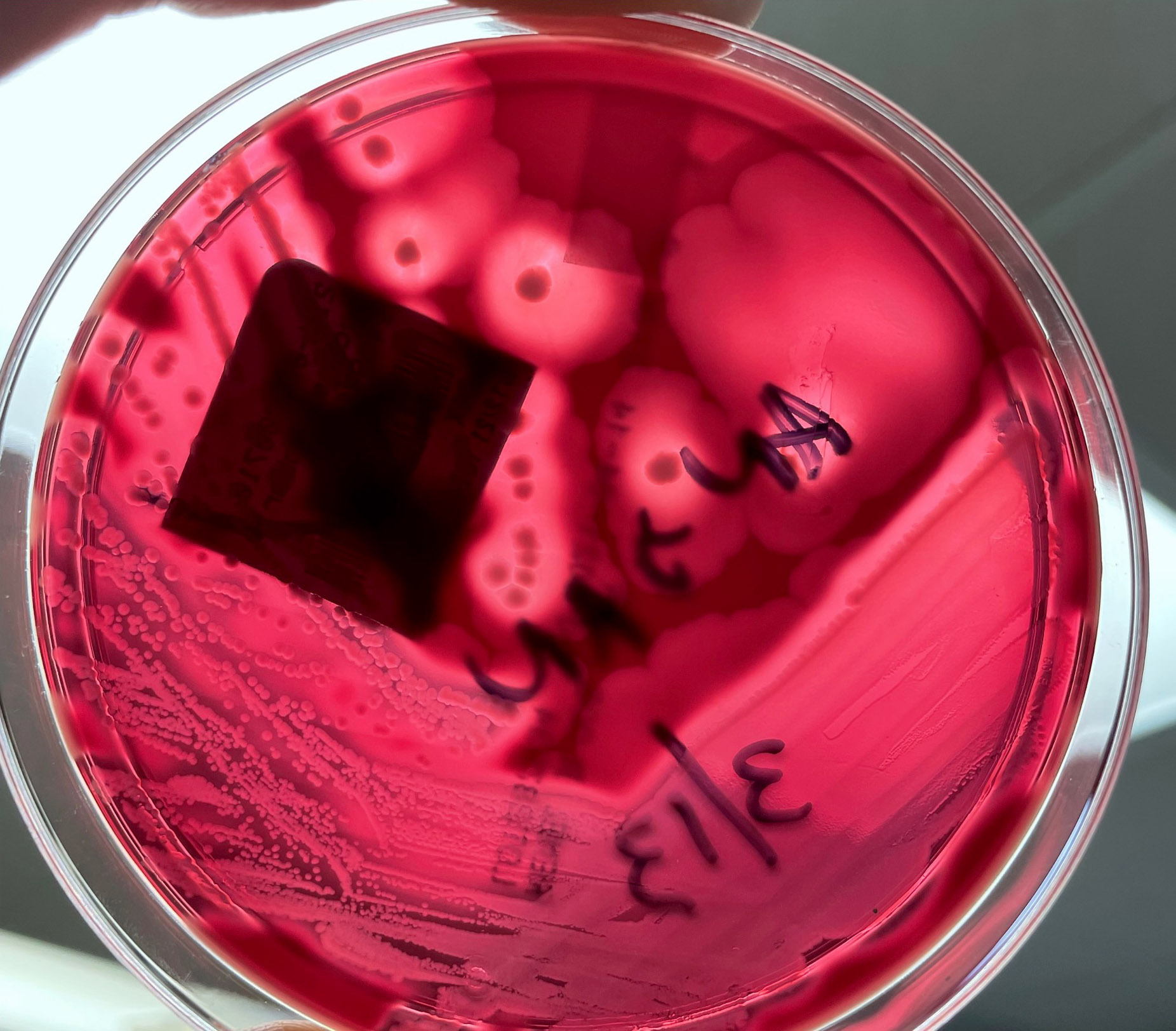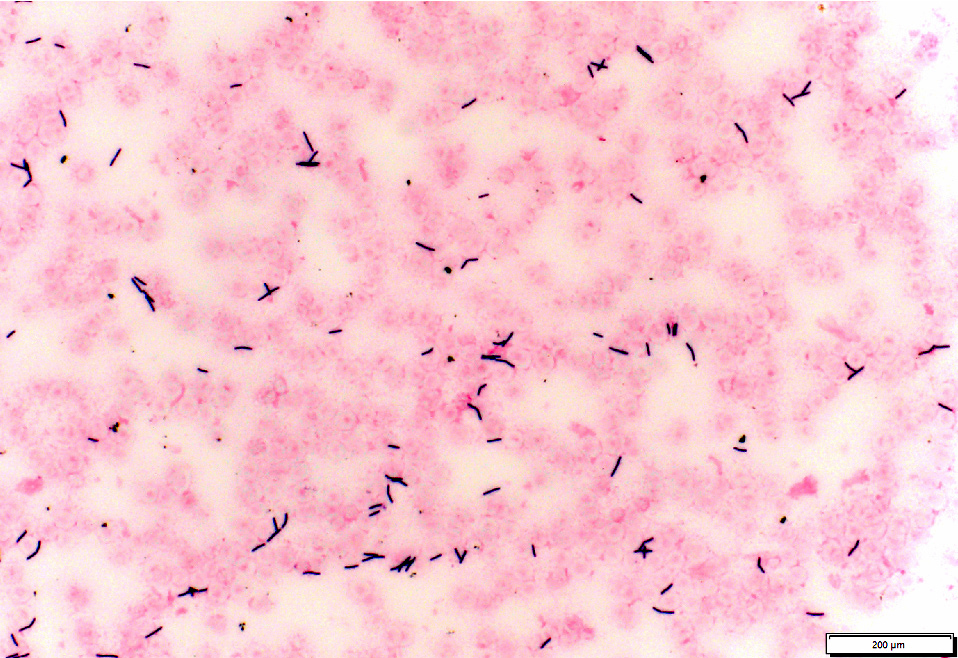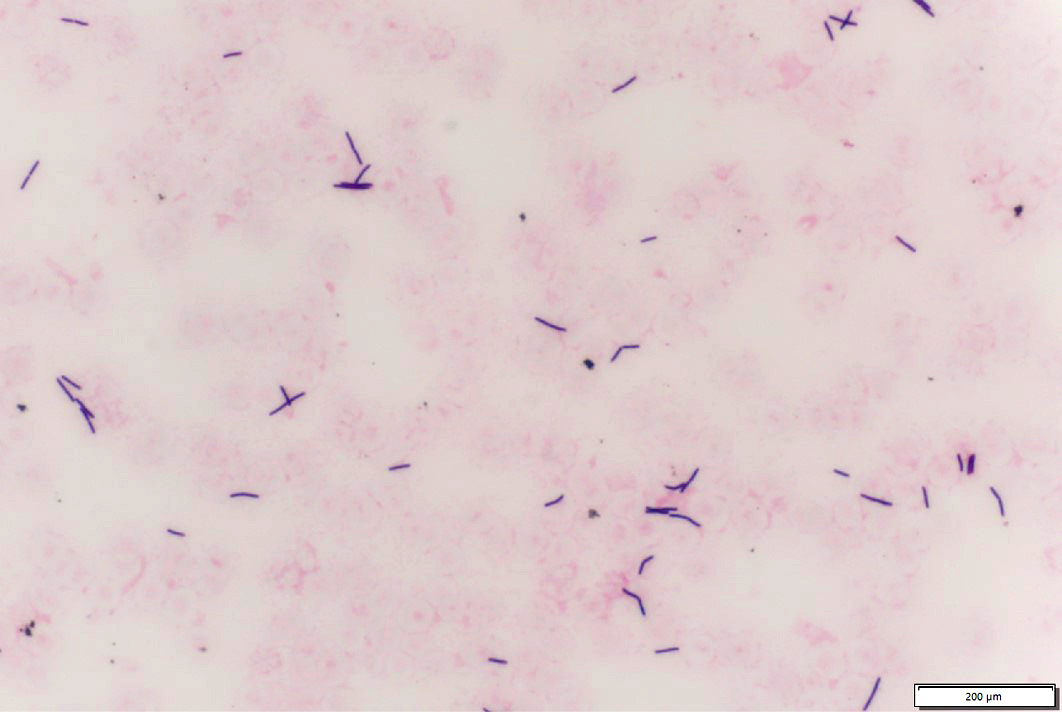Table of Contents
Definition / general | Essential features | Terminology | Epidemiology | Sites | Pathophysiology | Clinical features | Diagnosis | Laboratory | Case reports | Treatment | Clinical images | Microscopic (histologic) description | Microscopic (histologic) images | Videos | Differential diagnosis | Board review style question #1 | Board review style answer #1 | Board review style question #2 | Board review style answer #2Cite this page: Ullah A, Samra H. Clostridium perfringens / C. septicum. PathologyOutlines.com website. https://www.pathologyoutlines.com/topic/microbiologyperfringenssepticum.html. Accessed April 20th, 2024.
Definition / general
- Common anaerobic, gram positive pathogen (Proc Natl Acad Sci U S A 2002;99:996)
Essential features
- Gram positive, spore forming, rod shaped, anaerobic
- Ubiquitous in environment, soil and human intestinal tracts
- Cause: significant trauma related gas gangrene, food poisoning and sepsis
Terminology
- Clostridia, Eubacteriales, Clostridiaceae, Clostridium, Clostridium perfringens / septicum
Epidemiology
- Clostridium perfringens: diabetic, immunocompromised patients and history of trauma (J Bone Joint Surg Am 2003;85:1454)
- Clostridium septicum: strongly associated with malignancy, most commonly of colonic or hematological origin (Int Semin Surg Oncol 2006;3:12)
Sites
- Sites of trauma (subcutaneous tissue, skeletal muscle)
- Large intestine (enteritis)
- Blood stream infections
- Reference: J Bone Joint Surg Am 2003;85:1454
Pathophysiology
- Production of alpha toxin (a phospholipase C) important virulence factor for myonecrosis
- Collagenases, hyaluronidase, fibrinolysin, hemagglutinin and hemolysins mediates increase vascular permeability systemic spread of the infection
- Food poisoning mediated by enterotoxin production (Future Microbiol 2014;9:361)
Clinical features
- Traumatic gas gangrene, blood stream infections, food poisoning and preterm necrotizing enterocolitis (Clostridium perfringes)
- Nontraumatic gas gangrene and blood stream infections (Clostridium septicum)
- References: J Bone Joint Surg Am 2003;85:1454, Clin Infect Dis 2016;62:863
Diagnosis
- Diagnosis is based on clinical observations
- Necrotizing tissue Gram stain and anaerobic bacterial culture
- Blood cultures (aerobic and anaerobic)
- Reference: J Bone Joint Surg Am 2003;85:1454
Laboratory
- Anaerobic growth in routine culture conditions, 37 °C
- Growth on blood agar
- Catalase negative
- Small to medium sized gray colonies
- Clostridium perfringens double zone hemolysis, differentiates from other Clostridium spp.
- Matrix assisted laser desorption ionization time of flight (MALDI-TOF) mass spectrometry
- Rapid alternative to 16S rRNA sequencing for identifying anaerobes isolated from solid culture media
- Reference: J Bone Joint Surg Am 2003;85:1454
Case reports
- Newborn boy with Clostridium perfringens meningitis following caudal anesthesia (A A Pract 2020;14:e01188)
- 17 year old boy with sustained intraocular penetrating injury (BMC Ophthalmol 2018;18:88)
- 60 year old woman with food poisoning (Toxins (Basel) 2019;11:138)
- Elderly woman who presented in shock with a progressive abdominal pain (Br J Haematol 2020;190:641)
Treatment
- Surgical debridement of traumatic injuries
- Wound cleansing, removal of dead tissue
- Broad spectrum beta lactams
- Hyperbaric oxygen may be useful
- Food poisoning, self limiting
- Reference: J Bone Joint Surg Am 2003;85:1454
Microscopic (histologic) description
- 1 x 6 micron large, rectangular rod shaped, gram positive bacteria
Videos
Clostridium perfringens - an osmosis preview
Differential diagnosis
- Group A Streptococcus infection:
- Appears as gram positive cocci on Gram stain
- Vibrio vulnificus myositis:
- Associated with clinical history of traumatic water injury
- Pyomyositis due to Staphylococcus aureus:
- Appears as gram positive cocci in clusters on Gram stain
- Rhabdomyolysis:
- Associated with clinical history of trauma or strenuous exercising
- Culture negative
- Bacillus cereus food poisoning:
- Toxin producing facultatively anaerobic gram positive bacterium
- Association with reheated food exposure
Board review style question #1
A 44 year old male construction worker presented to the emergency room with acute onset severe right thigh pain and altered mental status. Physical examination showed large bulla at the location of his pain and crepitance on palpation. Gram stain performed on the bulla aspirate showed large gram positive rods. What is the most likely organism?
- Clostridium difficile
- Clostridium perfringens
- Pseudomonas aeruginosa
- Streptococcus pyogenes
Board review style answer #1
B. Clostridium perfringens. Gas gangrene is a necrotic infection of soft tissue with high mortality rate, often necessitating amputation and commonly associated with Clostridium perfringens. While Streptococcus pyogenes could cause gangrene / necrotizing fasciitis, it is gram positive cocci. Pseudomonas aeruginosa is gram negative rod. While Clostridium difficile is gram positive rod, it is the causative agent of antibiotic associated diarrhea and not linked to necrotizing fasciitis.
Comment Here
Reference: Clostridium perfringens / Clostridium septicum
Comment Here
Reference: Clostridium perfringens / Clostridium septicum
Board review style question #2
For Clostridium septicum bacteremia, association with which of the following clinical conditions should be investigated?
- Bronchiectasis
- Colon cancer
- Diverticulitis
- Inflammatory bowel disease
Board review style answer #2
B. Colon cancer. Clostridium septicum is known to be associated with malignancy, most commonly of colonic or hematological origin and therefore in patients where this organism is isolated, efforts must be made to exclude an occult underlying condition. Association with any of the other mentioned choices has not been described.
Comment Here
Reference: Clostridium perfringens / Clostridium septicum
Comment Here
Reference: Clostridium perfringens / Clostridium septicum






